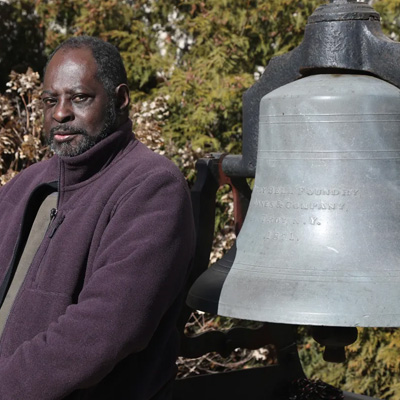by Jim Beckerman
No one proclaimed — back in the 1850s — that a certain house and factory at Bridge Street and Broadway in Paterson was an Underground Railroad stop. You had to know.
Now, it’s being proclaimed.
On Wednesday, May 4, at 11 a.m., Mayor Andre Sayegh, U.S. Rep. Bill Pascrell, Jr., D-Paterson, and other dignitaries will be on the site of those buildings — the last demolished in 1983 — to officially announce that the National Park Service has named the Huntoon-Van Rensalier Underground Railroad Site, now owned by the city of Paterson, as one of 16 new listings.
The buildings that fugitive slaves on their way to Canada made for — after spotting a lighted cupola from their hideout on Garret Mountain, according to legend — is, as of March 9, part of the National Underground Railroad Network to Freedom.
It is now one of two Paterson parks (Great Falls National Historical Park is the other) acknowledged by the National Park Service, and one of only two Underground Railroad sites in New Jersey that have such federal recognition. Of those, it is the only one in North Jersey — the other is in Salem County.
“I’m excited as to what’s going to happen now,” said historian Jimmy Richardson, author of “Slavery at the River’s Edge,” a Paterson native who fought for nearly 10 years to get this recognition. He, too, will be speaking at Wednesday’s ceremony.
“This opens a door to Paterson’s history,” he said. “And not just the African American history. Ninety percent of the people in the Underground Railroad in Paterson were white. To me, that’s a really important cultural thing to say — how many white people helped Black people.”
On the site where the factory once stood is a 2014 sculpture group depicting coffee and spice merchant Josiah Huntoon — white — and his assistant, William Van Rensalier — Black. They are holding the lanterns by which they guided fugitive folk in and out of the city, known at that time as a hotbed of abolitionism.
That history, like the general history of African Americans in the city, has been neglected for two centuries.
“It has really gone unnoticed, unattended and forgotten,” Richardson said. “That’s how I got involved in it. You try to find out something about the African American community, and nobody knows anything. They have not shaken the bag thoroughly. When you shake the bag, you want something to fall out.”
Matter of principle
It might seem odd to think of Paterson, city of factories and — often — exploited workers, as a focus of abolitionist activity. But in Paterson, it was a matter of principle. The free labor of the North versus the forced labor of the South.
Patersonians of that era were frequently English immigrants, and they brought with them Calvinist principles of free will. Many of Paterson’s industrialists were anti-slave advocates.
Its first mayor, John Jackson Brown, was an Underground Railroad agent. So, in the 1850s, was the county sheriff. The city had abolitionist newspapers. The First Baptist Church, the city’s first integrated congregation starting in 1824, was riddled with anti-slavery activists.
In the midst of this were Huntoon and Van Rensalier — boss and employee, but also friends, according to many accounts, who hid fugitives first in the Huntoon family cellar, and later in the basement of his nearby factory.
“He was an industrialist and a manufacturer,” Richardson said. “But he was also a freeholder, a president of the Board of Education, publisher, and trustee for two different banks. This was a very influential guy.
“William Van Rensalier, a Black man, comes to Paterson seeking work — though for the life of me, I can’t understand why he left Spring Valley in New York to come to Paterson at the beginning of the Fugitive Slave Act. Why go South? In any case, he is befriended by Josiah Huntoon and works for him starting when he’s a young man.”
Richardson has been trying to get the site of this duo’s good deeds some national recognition since 2013.
He put in six applications over the last nine years, but it was an uphill climb, he said. Always, he was asked for more corroboration, more detail. And it didn’t help that there was nothing historic on the site — the demolition of the actual Huntoon house 39 years ago meant there was nothing left to affix a plaque to.
But in the end, Richardson, in collaboration with Dr. Flavia Alaya, professor emeritus of cultural history at Ramapo College, and with help of others including the staff of the National Underground Railroad Network to Freedom, finally prevailed.
They helped him to find additional evidence, including accounts in a local newspaper, and three references from no less an authority than Frederick Douglass himself.
Richardson hopes this will spur other historians to look more closely at their own towns.
North Jersey, he said, is under-represented in the saga of the Underground Railroad. Municipalities as varied as Cranbury, Clark, Rahway, Elizabeth, Newark, Jersey City, Boonton, Dover and Vernon are known to have Underground Railroad sites — but much of this is oral tradition. As Richardson learned the hard way, it takes research and verification to get the government’s ear.
“You have to have someone to do the research,” he said. “Who were these agents? How were people being transported in and out of the city? You have to connect the dots.”
